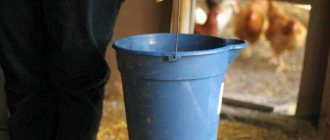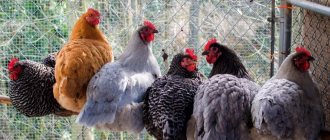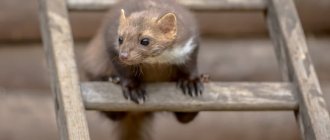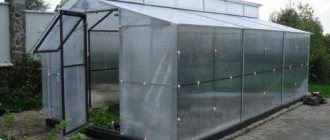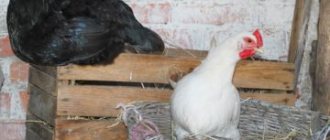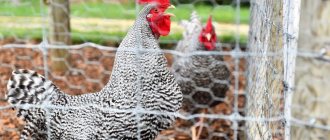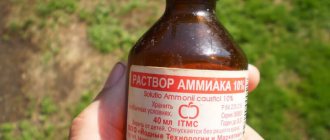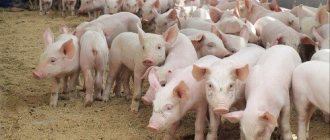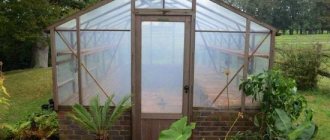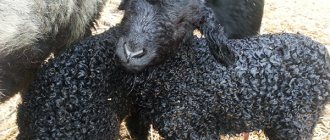How to calculate lime consumption
The amount of lime mortar for treatment is determined by the characteristics of the surface, as well as the method of application. If you work with a brush, the consumption will be higher. Smooth walls require approximately 0.5 liters for every 1 m2 of whitewash. This is less than it would cost to make rough brick ones.
Usually, slaked fluff or dough is dissolved in small portions in cold water, in a ratio of 1:3, and then left for a day. Knowing how to dilute lime for a chicken coop, you can accurately calculate the required amount of starting material.
The density of the whitewash mixture is checked with a wooden stick. If, after lowering into the solution, a uniform, but not watery, white trace remains on it, then the density is normal.
When only quicklime, obtained by burning limestone or chalk, is available, it is quenched with water. For this:
- Wear thick protective clothing, a respirator, and gloves. This is due to the fact that quicklime strongly corrodes the skin and can cause burns to the mucous membranes;
- Pour the raw materials into the container. It is allowed to use a metal bucket that is free of rust;
- Pour in cold water in a 1:1 ratio to get fluff, and to form a lime dough, take half as much liquid.
During the quenching process, the composition is stirred as vapor formation decreases. The readiness time depends on the type of source material. Fast-slaking lime will be ready in 8-10 minutes, and medium- and slow-slaking lime in 15 and 25 minutes. respectively. However, it is better to use the finished composition after 24 - 36 hours.
Diagnosis of infection
An adult tick is not easy to detect on a bird, since it is not constantly on chickens, but attacks them only at night. The parasite has microscopic dimensions (body length for females is 0.7-0.8 mm, for males - 0.5 mm), and is almost invisible during visual inspection of the plumage. During the daytime, he hides in floor cracks and debris. Living individuals, as well as their eggs, are often found in accumulations of dead insects mixed with soil and food. Red mites reproduce most intensively in the warm season, dying only at temperatures below -5°C.
“Practical advice. Chicken mites can be easily detected by placing some litter from the bottom of the nest or the floor of the cage onto a piece of white paper. It is better to inspect the poultry house at night in bright light, since it is at this time that the pest becomes active and attacks the birds. With a high degree of infection of the livestock, it can be noticed even during the day.”
Several best drugs
Experts have widely differing opinions regarding the effectiveness and efficiency of the use of drugs. Most people consider Virocid, Glutex, Ecocide S and Delegol to be the best substances. The first two representatives have been considered, let's move on to the rest.
“Ecocide S” is a product presented in the form of a powder concentrate. It has a complex effect; the drug is based on a triple salt. Additionally, organic acids, inorganic salt additives, and surfactants are used. These components have an unpleasant odor, which is why citrus flavoring is present.
The drug is distributed in a variety of containers from 50 g to 2.5 kg. The shelf life of the substance is 5 years, provided it is kept in a dry place, protected from sunlight. The depressurized drug retains its properties for 1 month. The diluted solution should be used within one week. “Ecocide C” is considered an oxidizing agent, which enhances its properties several times, but does not cause metal corrosion.
Before treatment, the birds should be removed; the procedure lasts 2 hours. After finishing another 5-6 hours, you should leave the chicken coop empty.
It's better to take the chickens outside
A 1% solution is used for disinfection; all surfaces are treated with it. It is also possible to have a preventive sanitary procedure for water using Ecocide S, then the dosage is 0.5%. The drug has a hazard class 3, you will have to follow basic precautions.
"Delegol" is a drug with a rich complex of active substances. Allows you to eliminate bacteria of various origins. It comes in the form of a bluish liquid that mixes easily with water. Shelf life 3 years at temperatures above +6°C.
The sanitary procedure is carried out through fine-drip irrigation. It is necessary to cover all surfaces with the substance, and all living creatures will have to be driven out, since the drug is quite toxic. Avoid contact with mucous membranes.
To perform the procedure, you should prepare a 1% solution, where the consumption is 0.5 l per 1 m2. Exposure when using “Delegol” is 6 hours. When the concentration decreases to 0.75%, the exposure should be increased to 12 hours. It is strictly forbidden to exceed the concentration of the substance, otherwise harm to the chickens may occur.
Dosage
Experienced poultry farmers give chickens pure pieces of lime prepared using the method described above. Separate feeding containers are used for this. The chickens themselves approach the product and peck it in the required quantity.
If the bird does not show interest in lump lime, it is added to the feed, after being crushed to a powder state.
Below is how much slaked lime to give to chickens depending on their age (per head):
- from 1 to 17 weeks – 3 g;
- from 4.5 to 8.5 months – 5 g;
- from 9 months to 1 year – 8 g;
- from 1 year and older – 9-10 years.
For a flock of 10 chickens over 1 year old, you will need 100 g per day. The specified amount is added to the wet mash and fed to the bird.
Simultaneous processing of premises and birds
Large poultry farms have a certain period of time between the slaughter of old chickens and the introduction of young chickens. This pause is used to disinfect the house. On farms and vacation homes, the coop is always busy, so it often has to be handled with the birds inside. The compounds used are non-toxic and safe for birds:
- Vercon and Monclavid;
- Ecocide S and Virocide;
- other.
In addition to industrial products, iodine and aluminum monochloride can also be used.
Kinds
Disinfection of a chicken coop at home is divided into three main types:
- Preventive. Treatment is carried out once every six months or quarterly, when the seasons change.
- Forced. Procedures are carried out urgently when parasites are detected or after an outbreak of disease among birds.
- Final. The treatment is carried out after laboratory confirmed complete recovery of the birds from the detected disease.
In addition, several types of disinfection at home can be distinguished according to the chosen disinfection method:
- Chemical - to destroy parasites and bacteria, drugs in liquid, powder or gaseous form are used. The products can be aggressive in composition or safe for the birds themselves.
- Physical - disinfection is carried out using ultraviolet or quartz lamps, boiling water or hot steam.
- Biological - the method is used relatively rarely. In the process of destroying bacteria and insects, living organisms are used, which are natural enemies for pathogens, but in themselves do not pose a danger to chickens.
- Mechanical - the method involves the complete replacement of perches, water and food containers, as well as the removal of flooring and the top layer of the floor.
In case of serious outbreaks of diseases in the chicken coop, the listed methods are combined with each other. This allows you to achieve maximum effect at home.
How to disinfect a chicken coop
Among the many means of disinfection of agricultural premises, the following are the most popular.
Iodine checker
It is a bottle for fumigation, inside of which there are:
- combustible gasket;
- wick;
- Cliodesiv powder.
When such a bomb is ignited, dark iodine vapors are released, purifying both the surfaces and the air in the chicken coop.
The main advantage of this bomb for disinfecting a chicken coop is the high sensitivity of pathogenic organisms to the released vapors.
Smoke bomb
The principle of its action is the same as that of the iodine analogue, but essential oils and sulfur derivatives can act as active ingredients. The latter are quite toxic, so they should be used exclusively in an empty room, and then ventilated for a week.
Checker PAWN-B
The pyrethroid cypermethrin included in its composition is destructive to ticks, dipterans, as well as wingless insect parasites. The action of the checker is not based on smoke, but on the sublimation of the active substance, that is, on its spraying according to the aerosol principle.
Before fumigation, the birds, as well as their feeders and drinkers, are removed from the barn, and several Pawn-B checkers are distributed over the area of the room, in accordance with the instructions. After ignition, a fine mist is released, quickly filling the space of the room, including hard-to-reach places.
To destroy pests, 3-4 hours of fumigation is enough, after which the chicken coop is opened for ventilation.
Other means
You can prepare effective compositions for disinfecting a chicken coop yourself. For example:
- Mix potassium permanganate with hydrochloric acid in a ratio of 1:5 in a vessel with a wide opening.
- Place the dishes with the disinfectant composition in the barn for 30 minutes.
- After the required time, ventilate the room.
And one more recipe. Calculated for every 20 m3 of poultry house volume:
- 1.5 liters of water are poured into a ceramic dish.
- Add 1 g of aluminum powder, as well as 10 g of iodine crystals.
- The container is installed in the chicken coop.
The product acts on the principle of a checker, but is not as effective as it. During the treatment period, chickens can be left indoors, but after the procedure, be sure to ventilate it.
Lime
If we talk about its chlorine variety, then its use may be associated with a high risk of poultry poisoning even at the slightest excess of concentration. That is why they often take slaked lime, to which copper sulfate is added, and then applied to all internal surfaces.
This treatment effectively disinfects the room and is an excellent prevention of ectoparasites. It is better if the extinguishing process itself takes place directly inside the chicken coop, but in the absence of chickens in it. The fumes released as the lumps dissolve will kill bedbugs and other pests.
In the spring, whitewashing is carried out as part of preparing the barn for the warm season, and in the fall it is used to remove summer parasites.
Preparation for the process
Before you begin disinfecting indoors, you need to carry out several preparatory steps. Cleaning preparation includes the following:
- Cobwebs are removed from all surfaces and nests, and dust and dirt deposits are wiped off with a dry cloth. Then they clean out the droppings and shake out or renew the flooring.
- All metal structures in the poultry house are disinfected by heating. Most often, a blowtorch is used to complete the task.
- After dry cleaning, all internal concrete surfaces are covered with freshly slaked lime mixed with copper sulfate. The procedure is necessary to reduce the likelihood of fungal yeast formation.
How to disinfect a chicken coop
Complete sanitation of a barn is a combination of sanitary measures that allows not only to clean it of ectoparasites and other pathogens, but also to prevent their reappearance in the near future.
Preparation
To begin with, the chicken coop is cleaned mechanically, that is:
- they remove, and then hatch, the litter;
- free all surfaces from droppings;
- clean cesspools, as well as channels intended for collecting bird droppings;
- throw away the contents of the feeders;
- clean up the floor;
- clean the ventilation system.
The room is thoroughly washed with hot water and apple cider vinegar. Remove any remaining moisture with a wrung-out cloth so that no puddles remain. It is convenient to use high-pressure washers for this, similar to those designed for cars. It is mandatory to wash dishes for food, drinking water and mineral supplements, as well as all cleaning equipment. After this, you can begin the main procedure.
Disinfection
Treatment with slaked lime or other antiseptic solutions begins with the ceiling and perches, and ends with the floor. When it is possible to move birds from the barn to another room, diluted bleach can also be used. However, before returning the birds to the barn after such treatment, it will require thorough drying and long ventilation.
If disinfection is carried out using gentle means that allow the chickens to be left in the poultry house during treatment, it will have to be carried out more often. This is due to the high probability of parasites reappearing in the near future. If you disinfect the barn using these methods at least once every month and a half, the risks will become noticeably lower.
It is better to plan annual complex treatment for the summer, when the birds can spend the night under an open canopy in the yard.
Operating instructions
So, the preparatory measures were completed. In addition, we managed to understand how to dilute lime for whitewashing. However, what is the best way to whiten the surface of the walls, as well as the ceiling?
- It is recommended to cover windows, doors, floors, and furniture with film. This will make cleaning the room easier.
- Chalk whitewash must be removed. Any stains should be removed. Lime whitewash in a flaky state is undesirable. In addition, it is recommended to seal the cracks.
- Now you need to dilute the whitewash and get to work. The solution should be filtered if lime whitening will be applied with a spray gun or spray. The solution should be mixed first.
- You need to take care to protect your face and hands. To do this, you need to use glasses, a mask, gloves, thick clothing, and a respirator. Otherwise there will be a risk of burns.
- It is recommended to wet the surface before applying whitewash. A sprayer is traditionally used for this.
- The whitewash should be poured into the spray gun, where you need to add air. The nozzle of the device will require adjustment, because only in this case is uniform spraying expected. If the whitewash cannot be sprayed, it may be too thick. It is advisable to add water to the container and then mix thoroughly.
- It is better to work with a sprayer at a distance of 15 - 20 centimeters. From this position, whitening will be truly easy and pleasant.
- It is recommended to use circular movements.
- The second layer of whitewash is applied only after 1.5 - 2 hours.
Knowing how to dilute lime for whitewashing, you can successfully abandon chalk. Among the advantages of lime are bactericidal properties, so the cracks will be closed in a special way.
Where is lime whitening used?
Whitewashing with lime is cheap, and lime has antiseptic properties. Due to the fact that lime is a good antiseptic, lime whitewash is recommended for kindergartens, schools, and medical institutions.
You can whitewash a garage or basement with lime - it’s not expensive, and the white walls and ceiling will make it lighter. Whitewashing of walls with lime is allowed. Once dry, lime whitewash creates a strong film, and the whitewash will not remain on your clothes if you lean against a wall.
Lime whitewash is used for finishing wet areas due to its moisture resistance.
Whitewashing with slaked lime disinfects the surface. For this reason, it is used for whitewashing cellars, chicken coops, cowsheds and other livestock premises.
In gardens, tree bark is treated with lime whitewash.
What drugs should I use?
Compared to home-use substances, store-bought products have a number of advantages.
- The drugs contain several components, which provides a wide range of effects, that is, they are more effective. In one treatment procedure it is possible to get rid of most, if not all, parasites and harmful bacteria.
- They have been tested for safety and effectiveness. There are instructions for use, the effect on birds and people is determined, and possible side effects are indicated.
- More obvious use. Everyone uses homemade medications as they wish and in varying quantities. Ready-made products have a clear dosage and a technical support line for consultations.
Most disinfectants are applied by aerosol. Sprayed using a disinfection unit, motor sprayer or cold fog generator. The video shows the disinfection procedure using a motor sprayer, that is, professional disinfection of the poultry house is performed. The process itself takes little time and is quite simple; much more costs are incurred in preparing and cleaning the premises.
Video - Processing the poultry house
Among the special means for disinfection, “Virocid” ; it is sold in 20 liter canisters. The drug has a wide range of effects on various spores, bacteria, insects and other pests. Produced in Belgium. It is quite safe and can be used in the presence of birds, but the concentration of active substances must be reduced (mixed with water). There is no need to remove residual particles of the product from surfaces, since it is non-toxic and biodegradable.
No worse than the drug "Glutex" , which is effective against all known pathogens. It has 3 active ingredients with a synergistic effect: didecyldimethylammonium, glutaraldehyde and glyoxal. Sold in containers of 1 liter and 5 liters, the liquid is concentrated, so it is diluted with water 1 to 100-200 to reduce toxicity. Manufacturer Russia. The resulting solution is neutral to fabrics, metals, and various surfaces.
The main effect is considered bactericidal, but additionally has virucidal and fungicidal effects. The use of the composition implies the need to eliminate poultry and pre-clean the room. The approximate consumption is 0.3 l/m2 with a solution concentration of 0.5%.
Forced disinfection, which is caused by the presence of pests, is performed with a solution with a more saturated dosage of 1%. The solution prepared in this way has a consumption of about half a liter per 1 m2. The product has a shelf life of 3 years.
The drug "Glutex" is most effective when irrigating the surface, but washing and spraying are also considered acceptable. The room should be sealed for 3 hours, after disinfection, the cage components that directly touch the birds should be washed with water. The drug is most active for 7 days.
Professional or independent actions: what to choose
You can disinfect the chicken coop yourself. Another option is to call special services.
Professional treatment implies effective disinfection carried out according to all standards. The procedure requires financial costs. But if you order it once a year, then the costs are not significant. But calling the service every 2 months is not cost-effective.
Therefore, most farmers act wisely. Use the services of professionals once. And the rest of the time they maintain sanitary and hygienic conditions on their own.
It should be noted that even with self-disinfection, you will have to spend money on purchasing medications.
Liquid disinfectants
The main active ingredients of liquid disinfectants are chlorine compounds. In order for the disinfectant to enter into adhesive adhesion to the protected surfaces, it must be applied in the form of a lime mortar. The following disinfectants are in demand:
- Slaked lime.
- Bleaching powder.
- Sodium hypochlorite.
Slaked lime
Conventional whitewashing of walls and irrigation of the litter dries the treated surfaces, prevents condensation of dripping moisture, and prevents the development of pathogenic microbes and fungi. When the applied liquid dries, the bird is released into the chicken coop.
Bleaching powder
A mixture of bleach and water left for 24 hours has the greatest disinfection activity. It must be stirred for the first 5–6 hours. Then the container is placed in an empty, hermetically sealed chicken coop for a day. The released chlorine sanitizes the air and surfaces. Additionally, you can irrigate the walls and perches with clarified liquid. After treatment, the room is well ventilated until the specific odor disappears. Only then are chickens released into it. The person must work using gloves and a mask.
Bleaching powder
Sodium hypochlorite
For each liter of water add 200 g of soda ash and bleach. Stir regularly for 5–6 hours. Further actions are similar to the method of sanitizing the premises using bleach described above. This mixture destroys spore forms of microorganisms more effectively than the previous one.
